Design of a Self-Measuring Device Based on Bioelectrical Impedance Analysis for Regular Monitoring of Rheumatoid Arthritis
Abstract
1. Introduction
2. Materials and Methods
2.1. Research
2.1.1. Desk Research
2.1.2. User Research
- First, there are intervals between hospital visits; during that period, they were unable to self-identify and define their disease activity.
- Second, to make it even worse, the areas of pain and symptoms were inconsistent and had changed.
- Third, even on the day of visiting the hospital, they lack quality and amount of communication with the doctor so that their condition can be assessed accurately.
2.1.3. User Requirements
2.2. Design
2.2.1. Sensor Technology
2.2.2. Prototype Design
- Dimensions of hand insertion: The frame was designed to align with the average hand size of Korean women in their 50s, the age group with the highest incidence of RA, considering potential variations.
- Electrode-placement method: Thirty electrodes were positioned to enable the microcurrent to flow through the inflamed area.
- Protrusion of the electrode parts: The height of the hand frame portion near the electrodes was increased to enhance the adhesion between the electrodes and the hand.
- Hand-fixation method: An air cushion was used to ensure the stability of measurements by applying consistent pressure to the hand.
- Vertical insertion method for the hand: Because the device was designed for home use, we opted for a vertical insertion method to minimize volume.
2.2.3. UX/UI Design
3. Validation and Results
3.1. Technology Validation
- Remove the initial transient state of 5 s.
- Define 3.125 s of a continuous data bundle as a “Window”.
- In each Window, bioimpedance outliers are preprocessed. The data determined as outliers are replaced with the mean value of the corresponding Window.
- Define “subWindow” where the Window is divided into 10 sections. That is, each Window includes 10 subWindows.
- The steady state is identified when the difference between the maximum and minimum values of the mean subWindow values (n = 10) in the Window is less than 2 Ω.
- The convergence value is determined as the mean value of the mean subWindow values (n = 10).
3.2. Usability Evaluation
- What aspects do you consider crucial in the treatment of chronic diseases?
- To what extent do patients find it challenging to describe their condition during medical appointments?
- How much do you incorporate or reflect on these responses in your medical assessments?
3.3. Final Design
- Step 1: Touch the screen to start.
- Step 2: Put one hand in the hand-insertion section.
- Step 3: Stay still until the air is injected.
- Step 4: Wait until the measurement is finished.
- Step 5: Repeat from Step 2 to Step 4 with the other hand.
- Step 6: Check out the result on the small display of the device.
4. Discussion
5. Conclusions
6. Patents
Author Contributions
Funding
Institutional Review Board Statement
Informed Consent Statement
Data Availability Statement
Acknowledgments
Conflicts of Interest
References
- Rheumatoid Arthritis. Available online: https://www.who.int/news-room/fact-sheets/detail/rheumatoid-arthritis (accessed on 25 January 2024).
- McInnes, I.B.; Schett, G. The Pathogenesis of Rheumatoid Arthritis. N. Engl. J. Med. 2011, 365, 2205–2219. [Google Scholar] [CrossRef] [PubMed]
- Smolen, J.S.; Aletaha, D.; Barton, A.; Burmester, G.R.; Emery, P.; Firestein, G.S.; Kavanaugh, A.; McInnes, I.B.; Solomon, D.H.; Strand, V.; et al. Rheumatoid Arthritis. Nat. Rev. Dis. Primers 2018, 4, 18001. [Google Scholar] [CrossRef] [PubMed]
- Kim, H.; Cho, S.-K.; Kim, J.W.; Jung, S.-Y.; Jang, E.J.; Bae, S.-C.; Yoo, D.H.; Sung, Y.-K. An Increased Disease Burden of Autoimmune Inflammatory Rheumatic Diseases in Korea. Semin. Arthritis Rheum. 2020, 50, 526–533. [Google Scholar] [CrossRef] [PubMed]
- Park, J.; Lee, M.; Lee, H.; Kim, H.J.; Kwon, R.; Yang, H.; Lee, S.W.; Kim, S.; Rahmati, M.; Koyanagi, A.; et al. National Trends in Rheumatoid Arthritis and Osteoarthritis Prevalence in South Korea, 1998–2021. Sci. Rep. 2023, 13, 19528. [Google Scholar] [CrossRef] [PubMed]
- Kim, D.; Choi, C.-B.; Lee, J.; Cho, S.-K.; Won, S.; Bang, S.-Y.; Cha, H.-S.; Choe, J.-Y.; Chung, W.T.; Hong, S.-J.; et al. Impact of Early Diagnosis on Functional Disability in Rheumatoid Arthritis. Korean J. Intern. Med. 2017, 32, 738–746. [Google Scholar] [CrossRef] [PubMed]
- Kyburz, D.; Finckh, A. The Importance of Early Treatment for the Prognosis of Rheumatoid Arthritis. Swiss. Med. Wkly. 2013, 143, w13865. [Google Scholar] [CrossRef] [PubMed]
- Deighton, C.; Rudolf, M. How Does Rheumatoid Arthritis Need to Be Managed? Clin. Med. 2010, 10, 151–153. [Google Scholar] [CrossRef] [PubMed]
- Do, E.S.; Choi, H.J.; Suh, S.R. Health Behavior, Mental Health and Quality of Life in Women Patients with Rheumatoid Arthritis—Analysis from the Fourth Korea National Health and Nutrition Examination Survey. Nurs. Innov. 2016, 16, 39–46. [Google Scholar]
- Tański, W.; Szalonka, A.; Tomasiewicz, B. Quality of Life and Depression in Rheumatoid Arthritis Patients Treated with Biologics—A Single Centre Experience. Psychol. Res. Behav. Manag. 2022, 15, 491–501. [Google Scholar] [CrossRef]
- Lee, J.S. Treatment of Rheumatoid Arthritis. Korean Assoc. Intern. Med. Fall Acad. Present. 2011, 2011, 84–87. [Google Scholar]
- Ghil, J.H.; Jung, S.J.; Choi, S.T.; Kang, E.J.; Lee, S.W.; Park, M.C.; Park, Y.B.; Lee, S.K. The Effect of Early Diagnosis and Treatment on the Disease Activity and Joint Damages in Korean Patients with Rheumatoid Arthritis. J. Rheum. Dis. 2006, 13, 272–278. [Google Scholar]
- Hyrich, K.L. Patients with Suspected Rheumatoid Arthritis Should Be Referred Early to Rheumatology. BMJ 2008, 336, 215–216. [Google Scholar] [CrossRef] [PubMed]
- Niemantsverdriet, E.; Dougados, M.; Combe, B.; van der Helm-van Mil, A.H.M. Referring Early Arthritis Patients within 6 Weeks versus 12 Weeks after Symptom Onset: An Observational Cohort Study. Lancet Rheumatol. 2020, 2, e332–e338. [Google Scholar] [CrossRef] [PubMed]
- Zampeli, E.; Vlachoyiannopoulos, P.G.; Tzioufas, A.G. Treatment of Rheumatoid Arthritis: Unraveling the Conundrum. J. Autoimmun. 2015, 65, 1–18. [Google Scholar] [CrossRef]
- Norman, D.A.; Draper, S.W. User Centered System Design: New Perspectives on Human-Computer Interaction, 1st ed.; CRC Press: Hillsdale, NJ, USA, 1986; ISBN 978-0-89859-872-8. [Google Scholar]
- Park, S.H. Guidelines for Rheumatoid Arthritis Treatment. Korean J. Med. 2010, 79, 455–458. [Google Scholar]
- Park, S.H. Treatment of Rheumatoid Arthritis. Korean J. Med. 2012, 83, 229–232. [Google Scholar]
- Smolen, J.S.; Landewé, R.B.M.; Bergstra, S.A.; Kerschbaumer, A.; Sepriano, A.; Aletaha, D.; Caporali, R.; Edwards, C.J.; Hyrich, K.L.; Pope, J.E.; et al. EULAR recommendations for the management of rheumatoid arthritis with synthetic and biological disease-modifying antirheumatic drugs: 2022 update. Ann. Rheum. Dis. 2023, 82, 3–18. [Google Scholar] [CrossRef] [PubMed]
- Kardas, T.; Wielosz, E.; Majdan, M. Methods of Assessment of Joint Involvement in Various Systemic Connective Tissue Diseases. Reumatologia 2022, 60, 53–62. [Google Scholar] [CrossRef]
- Mäkinen, H.; Kautiainen, H.; Hannonen, P.; Sokka, T. Is DAS28 an Appropriate Tool to Assess Remission in Rheumatoid Arthritis? Ann. Rheum. Dis. 2005, 64, 1410–1413. [Google Scholar] [CrossRef]
- van Riel, P.L.C.M.; Renskers, L. The Disease Activity Score (DAS) and the Disease Activity Score Using 28 Joint Counts (DAS28) in the Management of Rheumatoid Arthritis. Clin. Exp. Rheumatol. 2016, 34, S40–S44. [Google Scholar]
- Son, K.M.; Lee, S.Y.; Seo, Y.I.; Choi, J.E.; Kim, H.A. Contribution of subjective Disease Activity Score 28 (DAS28) components to the response to treatment of rheumatoid arthritis. Clin. Rheumatol. 2017, 36, 1221–1227. [Google Scholar] [CrossRef]
- Youjung, H.; Sookon, L. Clinical manifestations and diagnosis of rheumatoid arthritis. J. Korean Med. Assoc. 2010, 53, 862–870. [Google Scholar]
- Kim, U.C.; Hong, C.H.; Lee, J.G.; Park, Y.S. Factors influencing health and quality of Life among allergy and asthma patients: With specific focus on self-efficacy, social support and health management. Korean J. Cult. Soc. Issues 2005, 11, 143–181. [Google Scholar]
- Hetland, M.L. Modern treatment strategies in rheumatoid arthritis. Dan. Med. Bull. 2011, 58, B4320. [Google Scholar] [PubMed]
- Cho, S.K.; Sung, Y.K. Treatment strategy for patients with rheumatoid arthritis. J. Korean Med. Assoc. 2020, 63, 422–430. [Google Scholar] [CrossRef]
- Otterness, I.G. The value of C-reactive protein measurement in rheumatoid arthritis. Semin. Arthritis Rheum. 1994, 24, 91–104. [Google Scholar] [CrossRef] [PubMed]
- Åström, M.; Thet Lwin, Z.M.; Teni, F.S.; Burström, K.; Berg, J. Use of the visual analogue scale for health state valuation: A scoping review. Qual. Life Res. Int. J. Qual. Life Asp. Treat. Care Rehabil. 2023, 32, 2719–2729. [Google Scholar] [CrossRef]
- Sokka, T.; Pincus, T. Joint counts to assess rheumatoid arthritis for clinical research and usual clinical care: Advantages and limitations. Rheum. Dis. Clin. N. Am. 2009, 35, 713-vi. [Google Scholar] [CrossRef]
- Debes, C.; Merentitis, A.; Sukhanov, S.; Niessen, M.; Frangiadakis, N.; Bauer, A. Monitoring Activities of Daily Living in Smart Homes: Understanding Human Behavior. IEEE Signal Process. Mag. 2016, 33, 81–94. [Google Scholar] [CrossRef]
- Henderson, J.; Condell, J.; Connolly, J.; Kelly, D.; Curran, K. Review of Wearable Sensor-Based Health Monitoring Glove Devices for Rheumatoid Arthritis. Sensors 2021, 21, 1576. [Google Scholar] [CrossRef]
- van den Berg, P.J.; Daoudi, K.; Bernelot Moens, H.J.; Steenbergen, W. Feasibility of Photoacoustic/Ultrasound Imaging of Synovitis in Finger Joints Using a Point-of-Care System. Photoacoustics 2017, 8, 8–14. [Google Scholar] [CrossRef]
- Oh, I.; Lee, D. A Study on Product Design Development of In Vitro Diagonostics(IVD) for Early Diagnosis of Rheumatoid Arthritis. J. Ind. Des. Stud. 2020, 14, 129–140. [Google Scholar]
- Richter, J.G.; Chehab, G.; Schwartz, C.; Ricken, E.; Tomczak, M.; Acar, H.; Gappa, H.; Velasco, C.A.; Rosengren, P.; Povilionis, A.; et al. The PICASO cloud platform for improved holistic care in rheumatoid arthritis treatment—Experiences of patients and clinicians. Arthritis Res. Ther. 2021, 23, 151. [Google Scholar] [CrossRef] [PubMed]
- Stucki, G.; Liang, M.H.; Stucki, S.; Brühlmann, P.; Michel, B.A. A Self-Administered Rheumatoid Arthritis Disease Activity Index (RADAI) for Epidemiologic Research. Arthritis Rheum. 1995, 38, 795–798. [Google Scholar] [CrossRef]
- Mollard, E.; Michaud, K. Self-Management of Rheumatoid Arthritis: Mobile Applications. Curr Rheumatol. Rep. 2020, 23, 2. [Google Scholar] [CrossRef]
- Mollard, E.; Michaud, K. A Mobile App With Optical Imaging for the Self-Management of Hand Rheumatoid Arthritis: Pilot Study. JMIR Mhealth. Uhealth. 2018, 6, e12221. [Google Scholar] [CrossRef] [PubMed]
- Rheumabuddy|NRAS|Mobile Apps|Self-Management. Available online: https://nras.org.uk/resource/rheumabuddy/ (accessed on 25 January 2024).
- Han, G.; Nah, S.G.; Kim, D.; Sung, Y.-K.; Ryu, H. Design of Mobile Application User Interface for Patients with Rheumatoid Arthritis. In Proceedings of the HCI Korea 2017, High1 Resort Convention Center, Gangwon, Republic of Korea, 8–10 February 2017; pp. 482–485. [Google Scholar]
- Han, Y.-H.; Woo, H.-J.; Park, S.-Y.; Lee, C.-H.; Chung, C.-H.; Lee, M.-S.; Lee, J.-H. Korean Domestic Trends in Clinical Research on Rheumatoid Arthritis since 2008. J. Korean Med. Rehabil. 2021, 31, 18–29. [Google Scholar] [CrossRef]
- Mialich, M.S.; Sicchieri, J.M.F.; Junior, A.A.J. Analysis of Body Composition: A Critical Review of the Use of Bioelectrical Impedance Analysis. Int. J. Clin. Nutr. 2014, 2, 1–10. [Google Scholar]
- Kil, S.H.; Lee, M.S.; Kim, S.S.; Shin, D.H.; Lee, S.M.; Kim, G.; Lee, J.K. Evaluation of Impedance on Biological Tissues Using Automatic Control Measurement System. J. Korean Soc. Nondestruct. Test. 2015, 35, 239–244. [Google Scholar] [CrossRef]
- Ellis, K.J. Human body composition: In vivo methods. Physiol. Rev. 2000, 80, 649–680. [Google Scholar] [CrossRef]
- Cosoli, G.; Scalise, L.; Tricarico, G.; Russo, P.; Cerri, G. Bioimpedance measurements in dentistry to detect inflammation: Numerical modelling and experimental results. Physiol. Meas. 2017, 38, 1145–1157. [Google Scholar] [CrossRef] [PubMed]
- Inan, O.; Mabrouck, S. Systems and Methods for Joint Health Assessment. U.S. Patent 2023/0255552 A1, 17 August 2023. [Google Scholar]
- Yoon, B.Y.; Lee, C.H.; Han, S.H.; Lee, Y.W. Clinical Characteristics and Joint Involvement of Rheumatoid Arthritis. J. Rheum. Dis. 2004, 11, 227–234. [Google Scholar]
- Lee, J.Y.; Kim, J.H.; Shin, M.S.; Yeoun, M.H. Pingpongdang: Self-management Application for Patients with Diabetes Mellitus. In Proceedings of the KSDS Conference Proceeding, Seoul, Republic of Korea, 13 November 2021; pp. 342–343. [Google Scholar]
- 100 Disease Statistics in Daily Life; Health Insurance Review and Assessment Service Medical Information Convergence Office Medical Information Management Department: Won-ju, Republic of Korea, 2018; pp. 72–73.
- Size Korea. Available online: https://sizekorea.kr/human-meas-search/human-data-search/meas-item (accessed on 25 January 2024).
- IEC 60601-1; Medical Electrical Equipment—Part 1: General Requirements for Basic Safety and Essential Performance. International Electrotechnical Commission: Geneva, Switzerland, 2012.
- Fish, R.M.; Geddes, L.A. Conduction of electrical current to and through the human body: A review. Eplasty 2009, 9, e44. [Google Scholar] [PubMed]
- Salmi, J.A. Body Composition Assessment with Segmental Multifrequency Bioimpedance Method. J. Sports Sci. Med. 2003, 2, 1–29. [Google Scholar]
- Ling, C.H.; de Craen, A.J.; Slagboom, P.E.; Gunn, D.A.; Stokkel, M.P.; Westendorp, R.G.; Maier, A.B. Accuracy of direct segmental multi-frequency bioimpedance analysis in the assessment of total body and segmental body composition in middle-aged adult population. Clin. Nutr. 2011, 30, 610–615. [Google Scholar] [CrossRef] [PubMed]
- Matzen, S.; Perko, G.; Groth, S.; Friedman, D.B.; Secher, N.H. Blood volume distribution during head-up tilt induced central hypovolaemia in man. Clin. Physiol. 1991, 11, 411–422. [Google Scholar] [CrossRef] [PubMed]
- Nielsen, J.; Molich, R. Heuristic evaluation of user interfaces. In Proceedings of the SIGCHI Conference on Human Factors in Computing Systems (CHI ’90), Association for Computing Machinery, New York, NY, USA, 1–5 April 1990; pp. 249–256. [Google Scholar]
- Nielsen, J. How to conduct a heuristic evaluation. Nielsen Norman Group 1995, 1, 8. [Google Scholar]
- Nielsen, J. Enhancing the explanatory power of usability heuristics. In Proceedings of the SIGCHI Conference on Human Factors in Computing Systems (CHI ’94), Association for Computing Machinery, New York, NY, USA, 24–28 April 1994; pp. 152–158. [Google Scholar]
- Nielsen Norman Group. Available online: https://www.nngroup.com/articles/ten-usability-heuristics/ (accessed on 25 January 2024).
- Usability.gov, System Usability Scale (SUS). Available online: https://www.usability.gov/how-to-and-tools/methods/system-usability-scale.html (accessed on 25 January 2024).
- Virzi, R.A. Refining the Test Phase of Usability Evaluation: How Many Subjects Is Enough? Hum. Factors J. Hum. Factors Ergon. Soc. 1992, 34, 457–468. [Google Scholar] [CrossRef]
- Scrum Dictionary|Subject Matter Expert (SME). Available online: https://scrumdictionary.com/term/subject-matter-expert-sme/ (accessed on 25 January 2024).
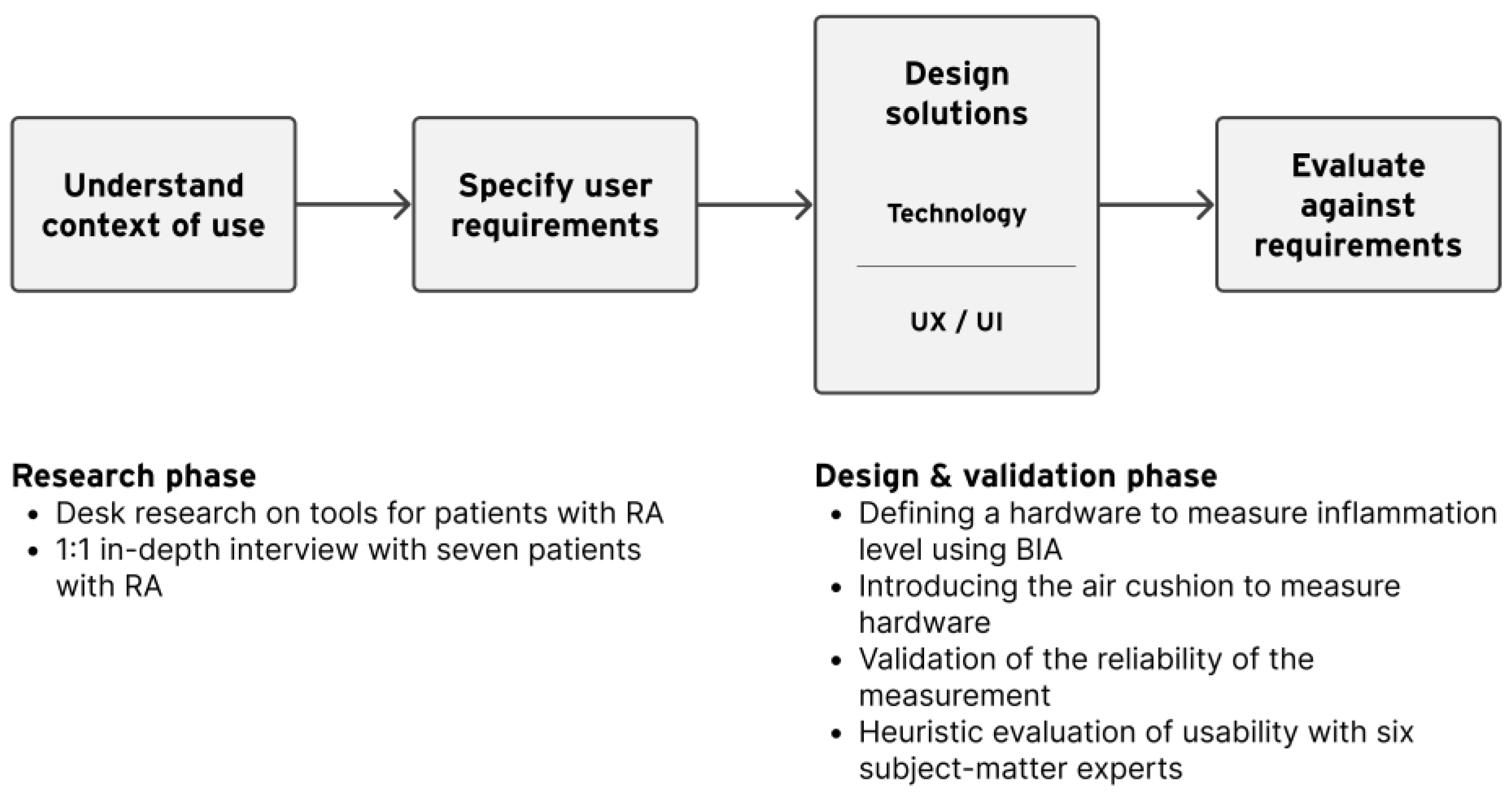
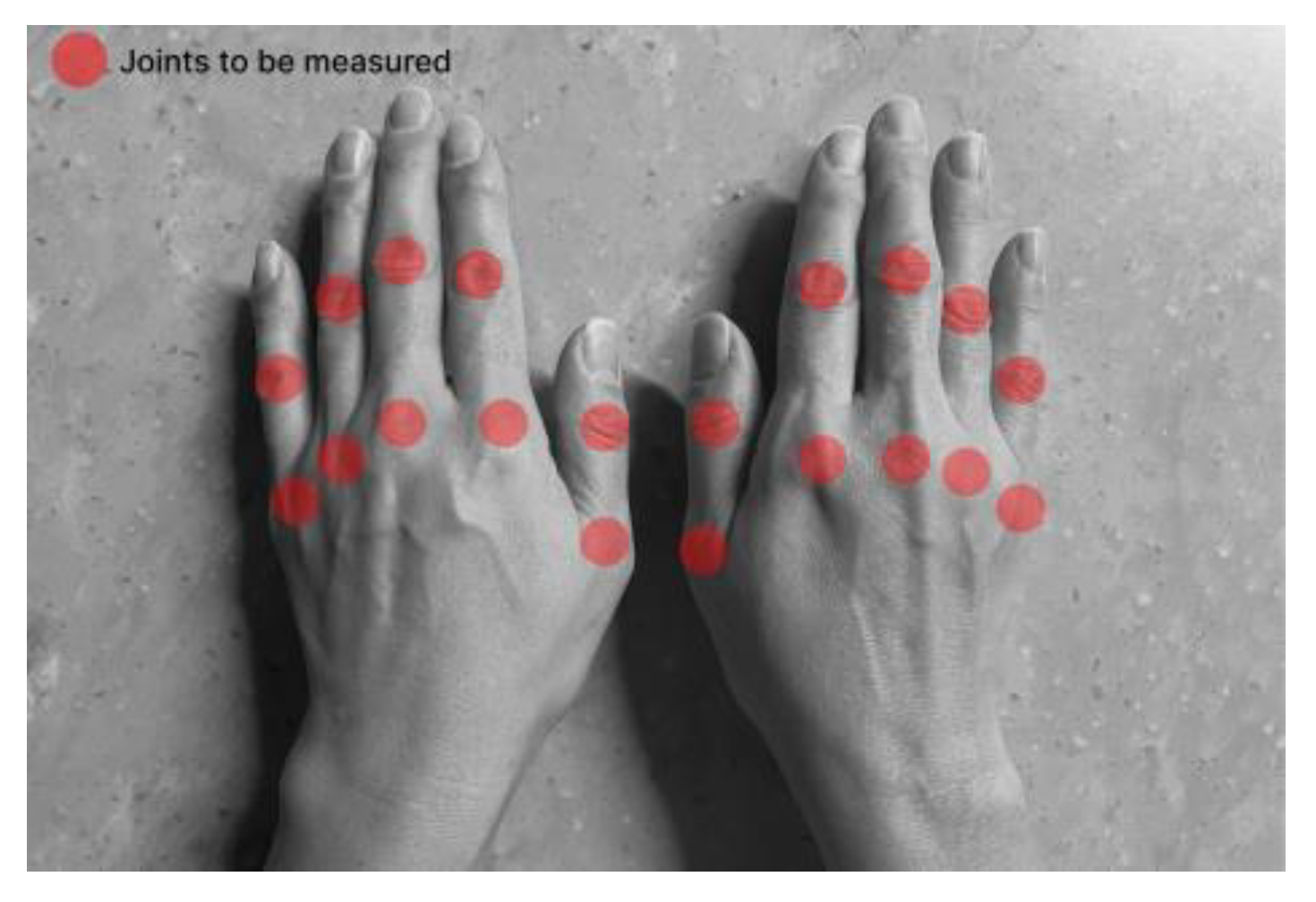
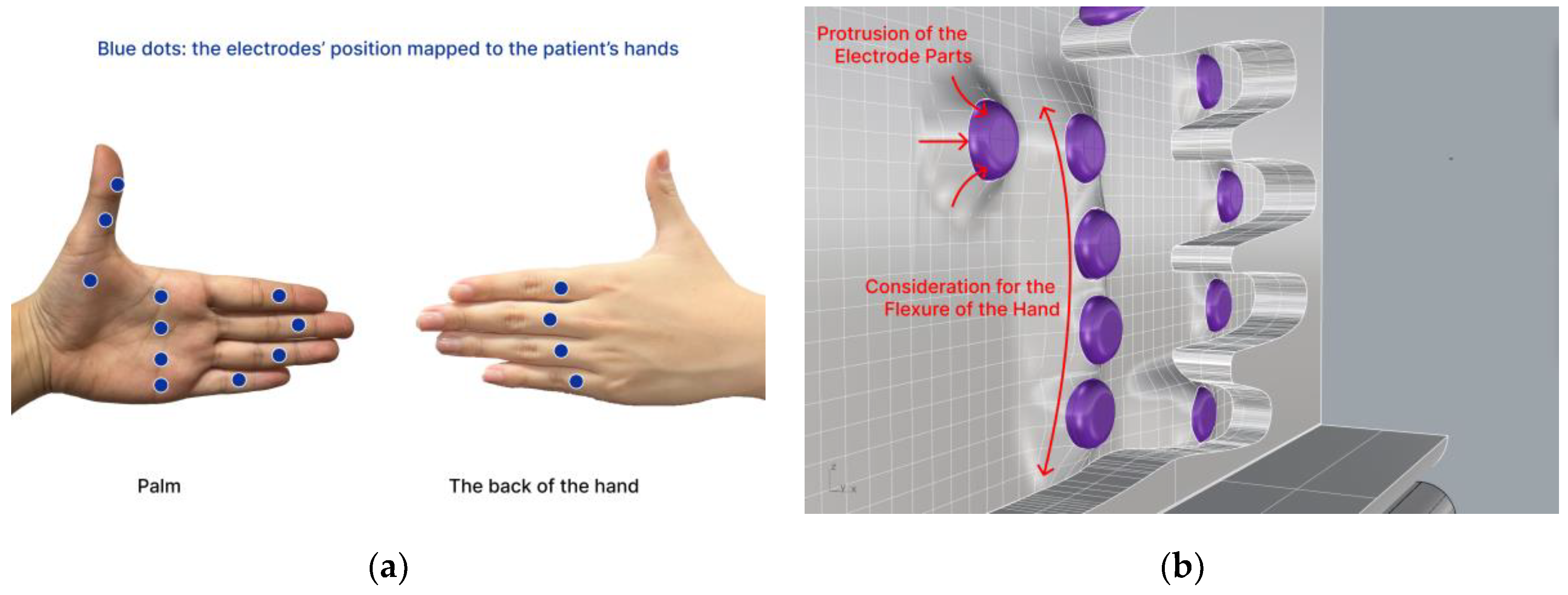

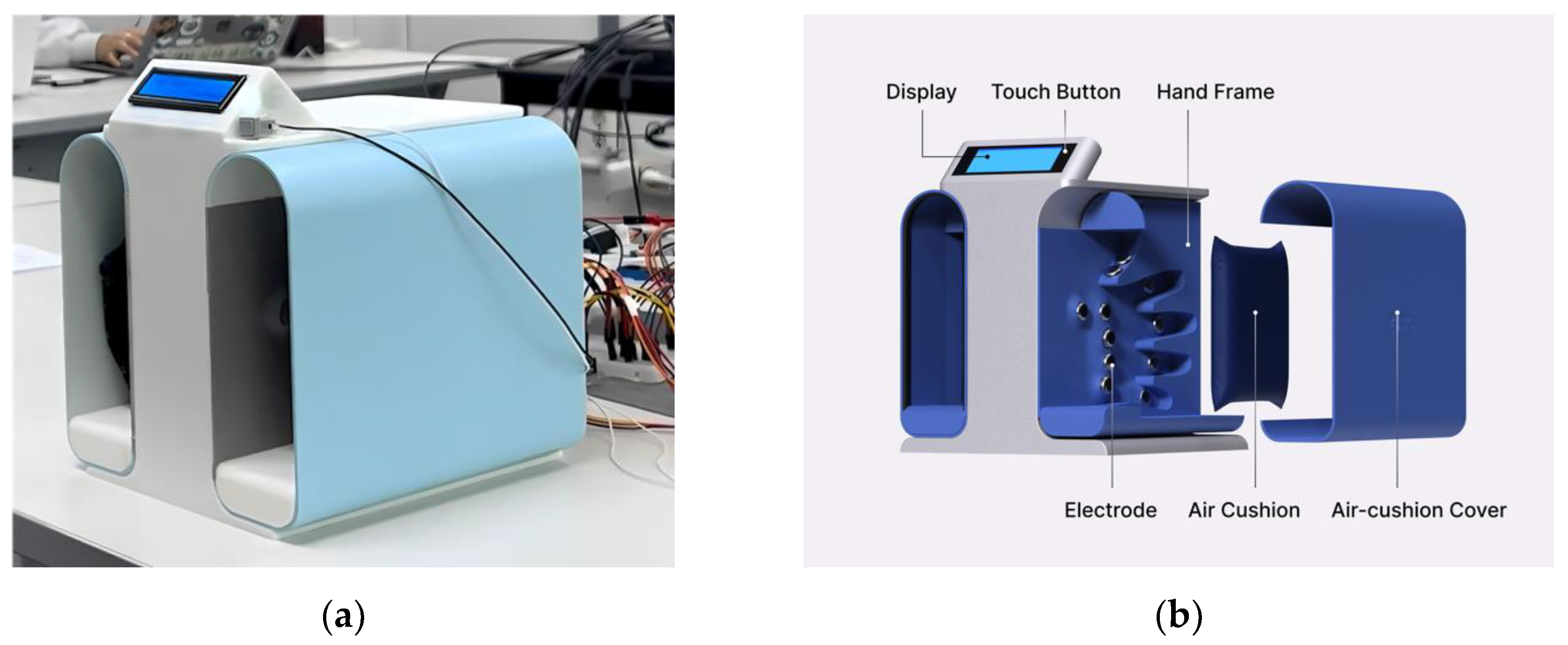


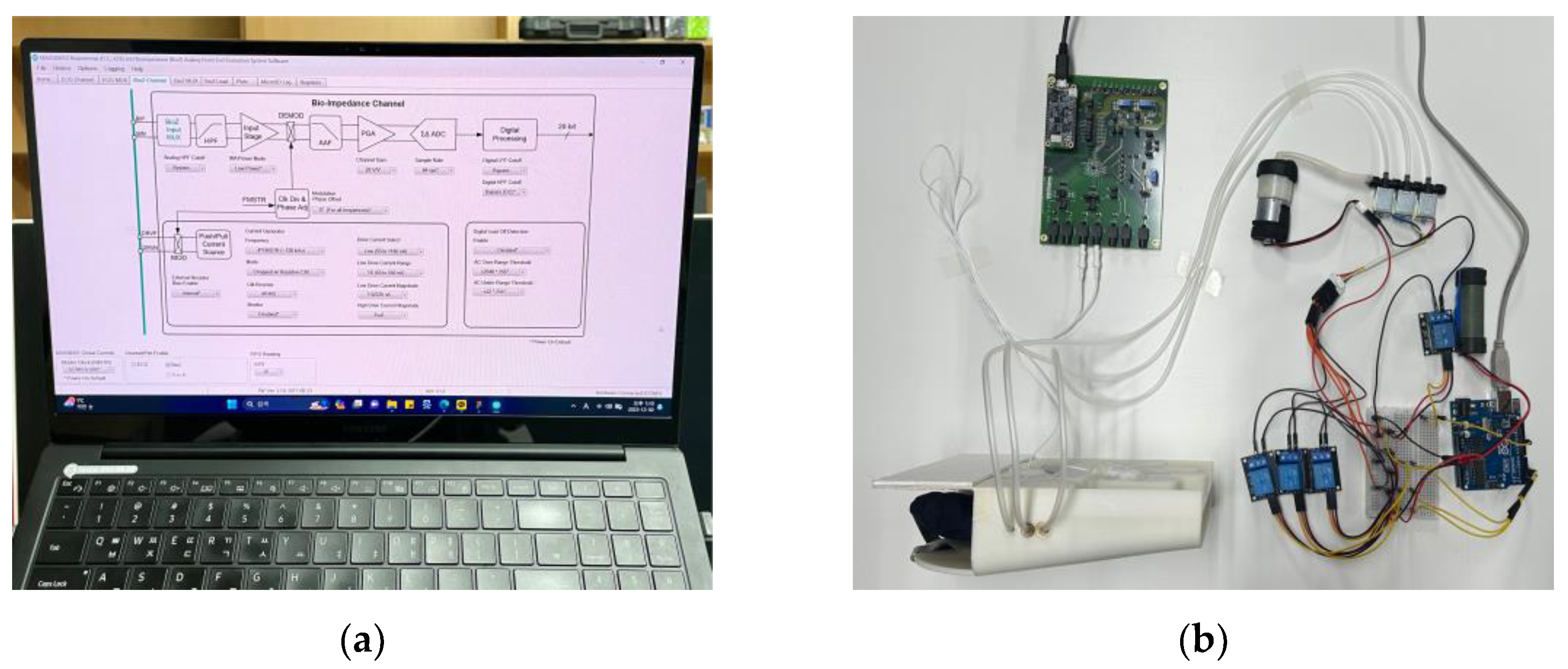


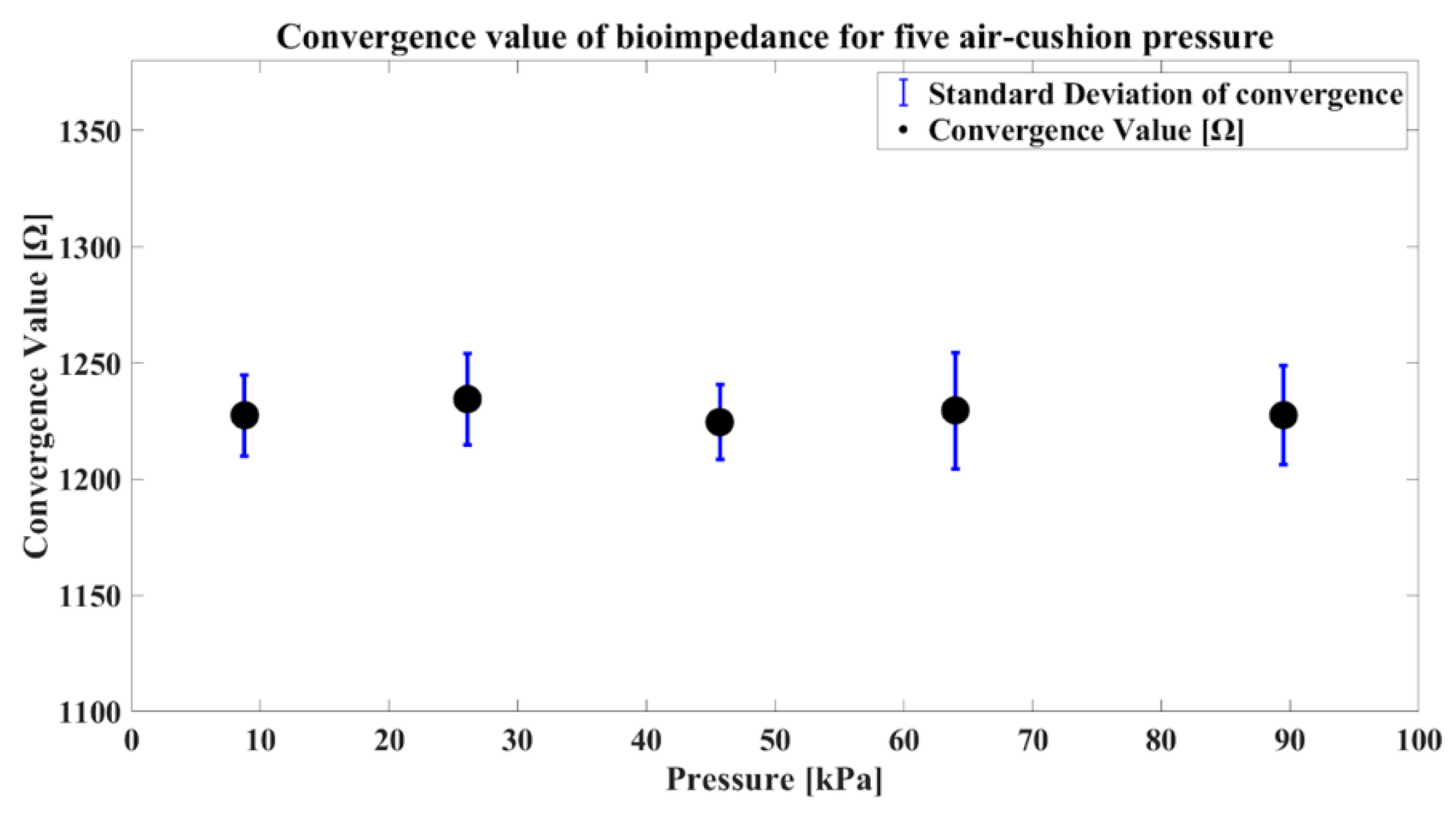





| No | Sex | Age Group | Period of Managing RA |
|---|---|---|---|
| 1 | Female | 40–49 | 2 years |
| 2 | Female | 30–39 | 2 years |
| 3 | Female | 60–69 | 20 years |
| 4 | Female | 40–49 | 3 months |
| 5 | Female | 40–49 | 10 months |
| 6 | Female | 40–49 | 2 years |
| 7 | Female | 40–49 | 3 months |
| Category | No | Question | |
|---|---|---|---|
| Usefulness of the overall system | U-1 | The lack of information on the patient’s disease activity during the interval between the hospital visits makes the treatment difficult. | |
| U-2 | The patient’s statements about their disease are reliable. | ||
| U-3 | Unclear statements about their symptoms and pain make it difficult to treat. | ||
| U-4 | It is helpful for a rheumatologist to diagnose when patients know their disease activity. | ||
| U-5 | It is helpful for a patient to know his/her disease activity. | ||
| U-6 | Patients’ data on their disease activity, accumulated during the intervals between their visits, will be used for the diagnosis. | ||
| U-7 | Patients’ data on their disease activity, available on the mobile app, will be used for better self-care of the patient’s health. | ||
| Perception about the air cushion | P-1 | The air-pressure method was suitable for fixing the hand inside during the measurement process. | |
| P-2 | The air pressure level was appropriate for fixing the hand. | ||
| P-3 | During the measurement, there was no feeling of discomfort caused by the air pressure. | ||
| P-4 | During the measurement, there was a feeling of close touch of my hand to the electrodes. | ||
| P-5 | During the measurement, there was no feeling of frustration due to the lack of visibility of the positions to be measured on my hand inside. | ||
| P-6 | When the measurement was completed, there was no feeling of discomfort caused by the air pressure. | ||
| Visibility of the system status | V-1 | It was easy to figure out the stages of progress (preparation, measuring, and completed). | |
| V-2 | It was cumbersome to press the button to move to the next step. | ||
| V-3 | The message written on the LED screen (Put your right hand in and press the button) was clear. | ||
| V-4 | The message written on the LED screen (Put your left hand in and press the button) was clear. | ||
| V-5 | The message written on the LED screen (Please check on the mobile application for more information) was clear. | ||
| Consistency and standards | C-1 | It was not confusing to measure one hand followed by the other (not both hands simultaneously). | |
| C-2 | Using one button for dual function (power on and off and start the measurement) was not a problem. | ||
| C-3 | The information shown on the screen of the mobile application regarding daily results was understandable. |  | |
| C-4 | The information shown on the screen of the mobile application regarding weekly results was understandable. |  | |
| C-5 | The information shown on the screen of the mobile application regarding monthly results was understandable. |  | |
| C-6 | The information shown on the screen of the mobile application regarding weekly checks was understandable. |  | |
| C-7 | The information shown on the screen of the mobile application regarding right-hand data was understandable. |  | |
| C-8 | The resulting value on the display was understandable. | ||
| C-9 | It is easy to use intuitively and does not need any manual. | ||
| Aesthetics and minimal design | A-1 | The design can be well harmonized at home. | |
| A-2 | The size of the product is suitable. | ||
| A-3 | The design well supports the physical measurement. | ||
| No | Job Title | Organization | Years of Expertise |
|---|---|---|---|
| 1 | Nurse | Severance Hospital | 7 years |
| 2 | Nurse | Samsung Medical Center | 10 years |
| 3 | Nurse | Samsung Medical Center | 21 years |
| 4 | Nurse | Samsung Medical Center | 28 years |
| 5 | Medical doctor (Rheumatology and Immunology) | Chung-Ang University Hospital | 10 years |
| 6 | User researcher (Usability) | Embrain (a Macromill group) | 25 Years |
| Category | Mean | SD | Usability Issues |
|---|---|---|---|
| Usefulness of the overall system | 4.33 | 0.606 | Measuring and accumulating a patient’s disease activity during the intervals between hospital visits will certainly help doctors diagnose and patients manage the disease. It is effective to communicate this through the mobile app. |
| Perception about the air cushion | 4.03 | 1.028 | Fixing hands using air pressure is effective and convenient for users. In particular, the advantage is that it is fixed at the same pressure for each measurement. However, the palm and thumb felt less secure than other fingers. |
| Visibility of the system status | 4.60 | 0.637 | All the instructions displayed on the device display were well-visible and understandable. |
| Consistency and standards | 4.10 | 1.067 | The device’s design and usage are intuitive and easy to understand. However, some users could find it difficult to understand the value because it shows the bioimpedance value as a disease activity. |
| Aesthetics and minimal design | 4.33 | 0.686 | The device is aesthetically designed to be suitable for home medical devices. There was an opinion that it would be better if it was a more portable design. |
Disclaimer/Publisher’s Note: The statements, opinions and data contained in all publications are solely those of the individual author(s) and contributor(s) and not of MDPI and/or the editor(s). MDPI and/or the editor(s) disclaim responsibility for any injury to people or property resulting from any ideas, methods, instructions or products referred to in the content. |
© 2024 by the authors. Licensee MDPI, Basel, Switzerland. This article is an open access article distributed under the terms and conditions of the Creative Commons Attribution (CC BY) license (https://creativecommons.org/licenses/by/4.0/).
Share and Cite
Jeong, J.; Park, Y.S.; Lee, E.; Choi, S.; Lim, D.; Kim, J. Design of a Self-Measuring Device Based on Bioelectrical Impedance Analysis for Regular Monitoring of Rheumatoid Arthritis. Sensors 2024, 24, 2526. https://doi.org/10.3390/s24082526
Jeong J, Park YS, Lee E, Choi S, Lim D, Kim J. Design of a Self-Measuring Device Based on Bioelectrical Impedance Analysis for Regular Monitoring of Rheumatoid Arthritis. Sensors. 2024; 24(8):2526. https://doi.org/10.3390/s24082526
Chicago/Turabian StyleJeong, JuYoung, Yun Soo Park, Eunchae Lee, SeoYoun Choi, Dokshin Lim, and Jiho Kim. 2024. "Design of a Self-Measuring Device Based on Bioelectrical Impedance Analysis for Regular Monitoring of Rheumatoid Arthritis" Sensors 24, no. 8: 2526. https://doi.org/10.3390/s24082526
APA StyleJeong, J., Park, Y. S., Lee, E., Choi, S., Lim, D., & Kim, J. (2024). Design of a Self-Measuring Device Based on Bioelectrical Impedance Analysis for Regular Monitoring of Rheumatoid Arthritis. Sensors, 24(8), 2526. https://doi.org/10.3390/s24082526







